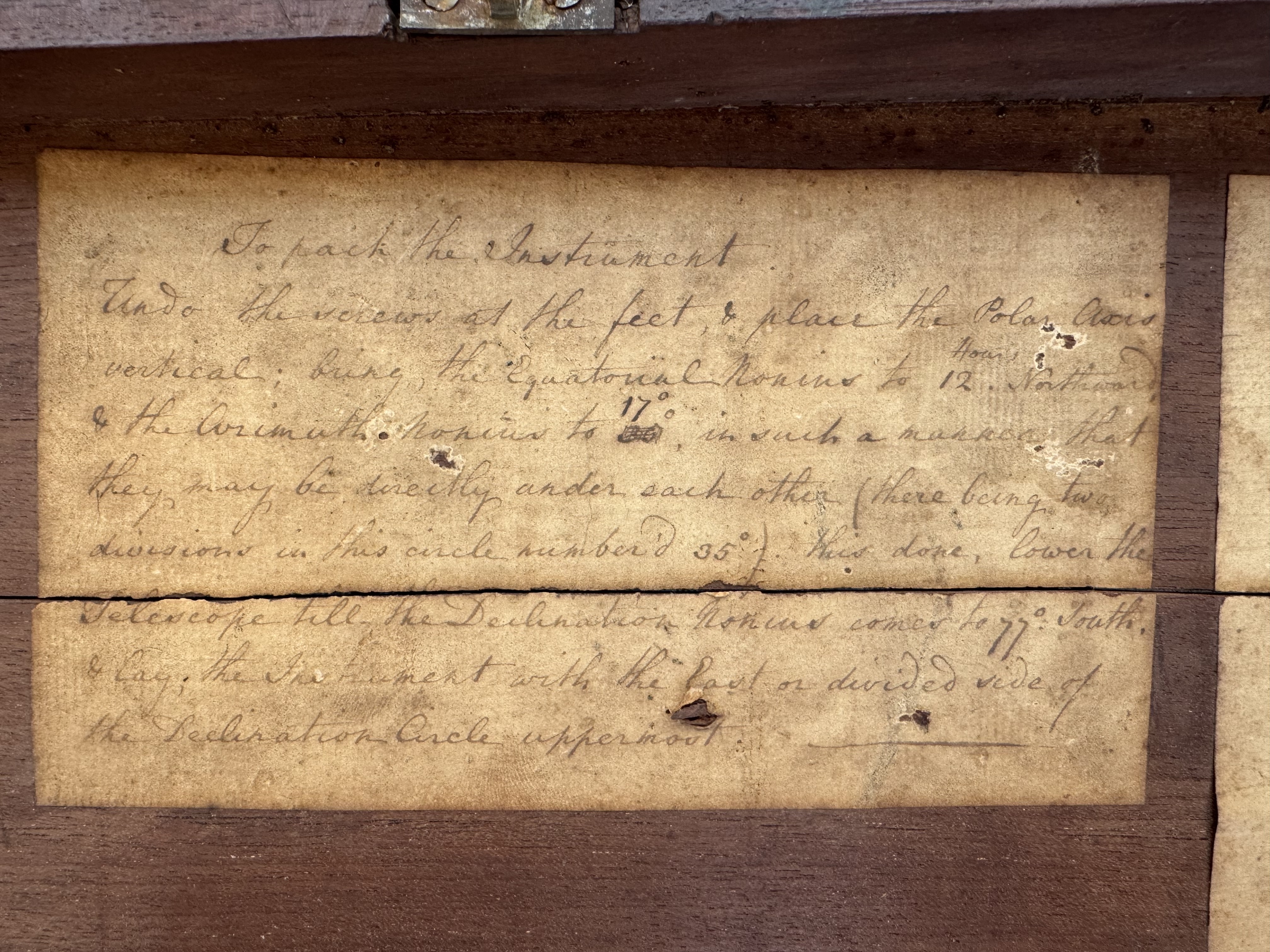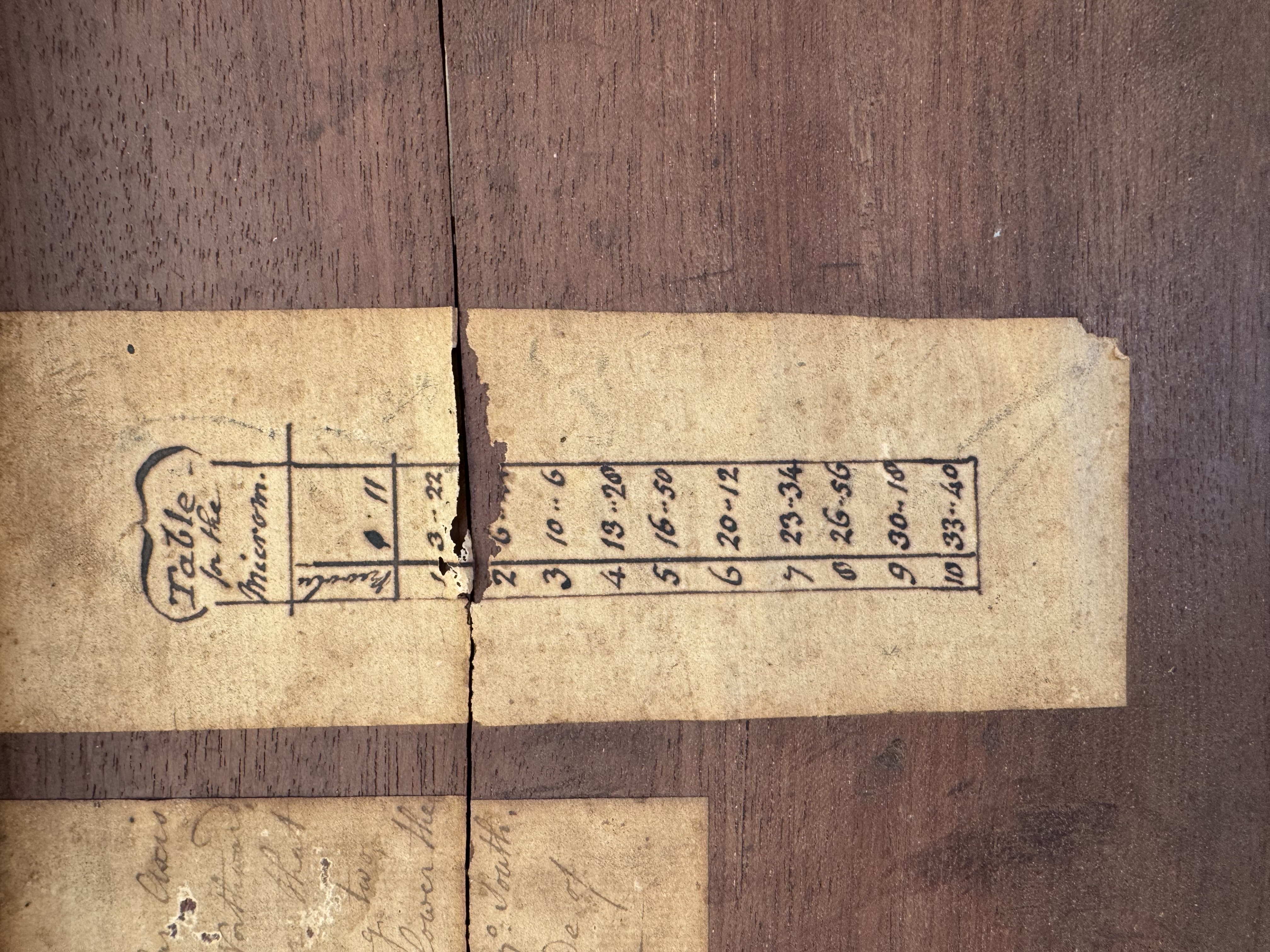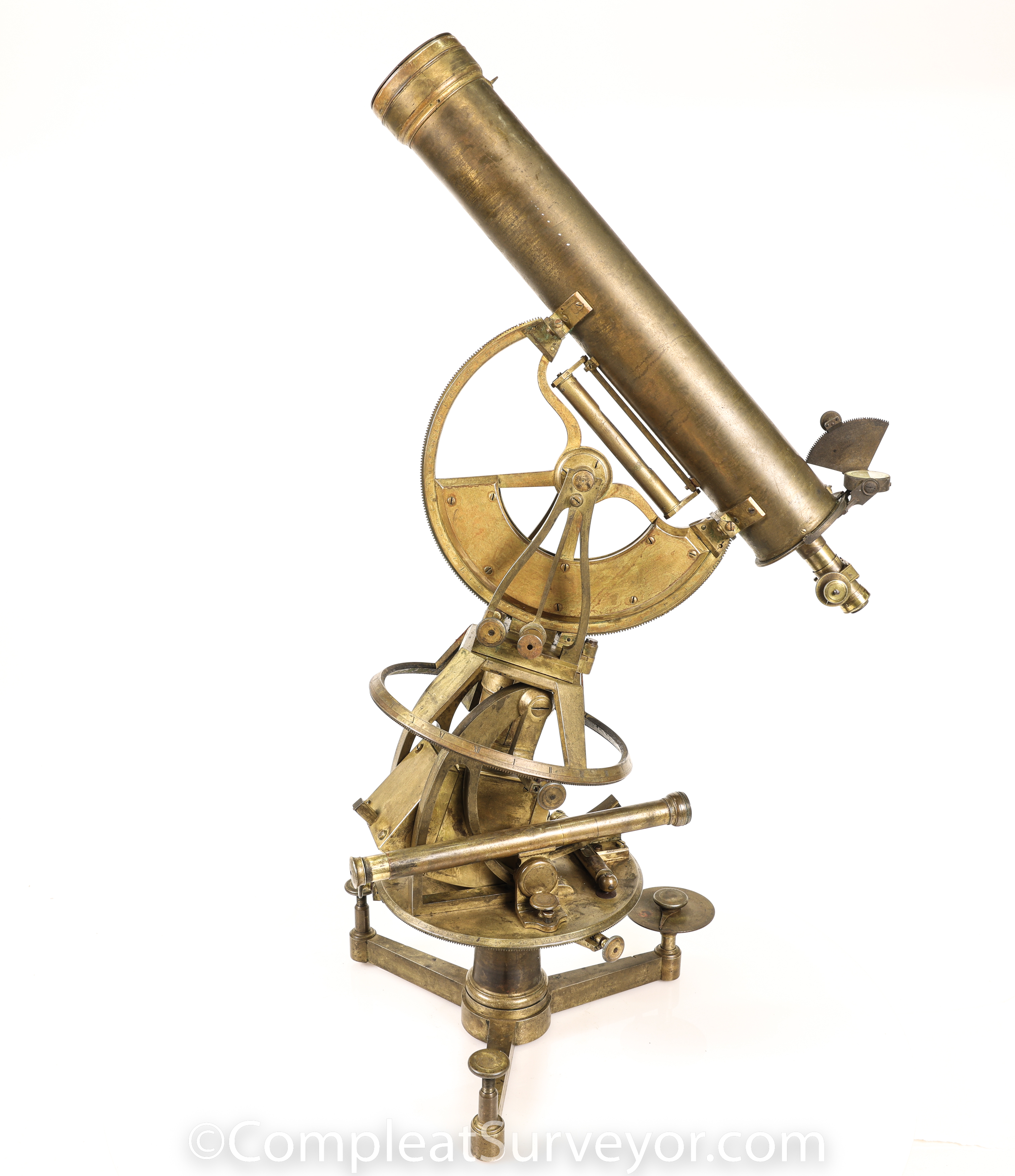
Thomas Jefferson's Missing Ramsden Equatorial Telescope?
In early 1793 Thomas Jefferson (when serving as the First Secretary of State for President George Washington) acquired the most valuable scientific instrument in his collection, an equatorial telescope by Jesse Ramsden (1735-1800), whom he considered preeminent among makers. Jefferson purchased the instrument from his friend David Rittenhouse, who was selling the instrument on consignment for the original owner, John William Gerard de Brahm. De Brahm had been the King's Surveyor General for the Southern District of America prior to the Revolutionary War.
With "this noble instrument," as he called it, Jefferson fixed the meridian at Monticello and viewed the solar eclipse of 1811 (with James Madison likely at his side using a Dollond Telescope). The Equatorial could also be used to determine both latitude and longitude. Judged by one scholar to be "unquestionably the most sophisticated instrument in the United States" at the time, Jefferson's equatorial was the foundation of his favorite theory of a method for determining longitude by lunar distances without a timepiece. Jefferson urged Lewis & Clark to take this instrument with them to explore the Louisiana Purchase and the Pacific Northwest, but they declined, thinking the instrument was too fragile for the rugged trip.
Jefferson's Equatorial Telescope has been missing for 200 years.
Longtime scientific instrument dealer and collector Dale Beeks surfaced this Equatorial Telescope shortly before he passed away. Dale and I started researching this instrument together as soon he acquired it. Sensing that this might be Jefferson's missing Equatorial, I wanted to finish the job and now own the instrument.
Interestingly, the Equatorial has no markings on it whatsoever that would identify who made or owned it. Notwithstanding the lack of the makers name on the instrument, I am 100% certain that Jesse Ramsden made this instrument, or, more precisely, the workers in his shop made it under Ramsden's supervision.
A more interesting question - is this Thomas Jefferson's missing Equatorial? While TJ did not engrave his initials on the instrument or carve his initials on the original box, ALL the evidence suggests that Thomas Jefferson did in fact own this instrument. The evidence shows Jefferson purchased a 7 inch (the diameter of the circles and arcs) Ramsden Equatorial made between 1771 and 1774 from John William Gerard de Brahm, and that Jefferson added a second telescope, a Watch Telescope, to his Equatorial. The Equatorial pictured above is a 7 inch Equatorial made between 1771 and 1774 with a Watch Telescope on it. One KEY additional fact - Ramsden only made a handful of Equatorials (which were of different sizes) between 1771 and 1774. Another KEY additional fact - adding a Watch Telescope to an early Equatorial wasn't a thing. The makers didn't offer to include a Watch Telescope, and the contemporaneous commentators never mentioned the need for adding a Watch Telescope . I therefore believe there is almost no chance that there is a SECOND 7 inch Ramsden Equatorial made between 1771 and 1774 with an added Watch Telescope.
So, I conclude that it's EXTREMELY LIKELY that Jefferson owned my Equatorial.
My Equatorial Telescope 360 Degree Views
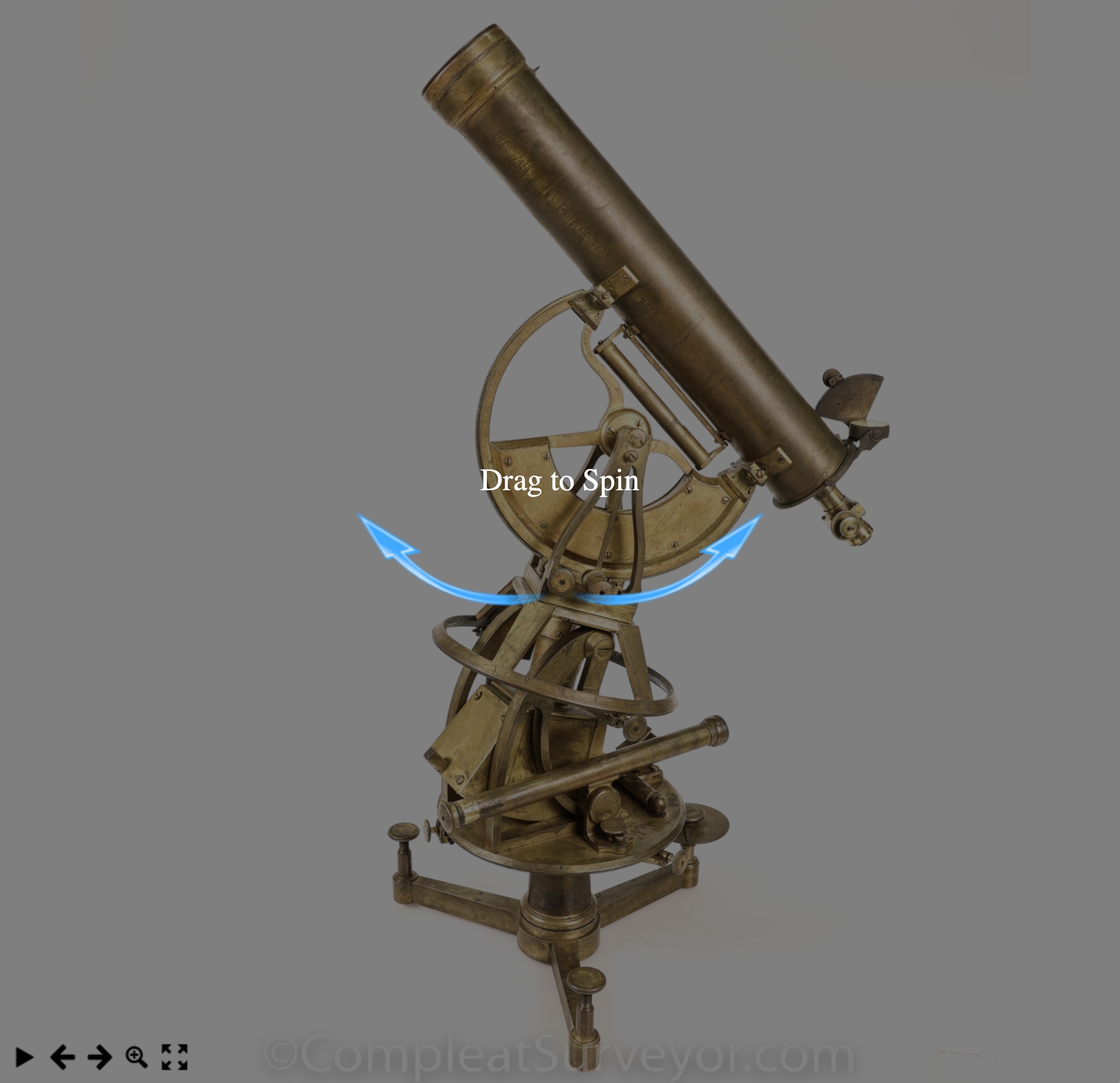
You can see a 360 degree view of the instrument by clicking on the link below. You can ZOOM in for a High Resolution View of any angle.
You can control the Rotation and Zoom two ways:
(1) There is a control panel on the bottom left hand side. The arrows control Rotation and the magnifying glass controls Zoom.
(2) Your mouse can control Rotation and Zoom as well. You control Rotation by dragging the Mouse from side to side. You control Zoom with the scroll wheel. I personally prefer the Mouse approach.
Not For Sale - On Display Only
Additional Pictures
Below are some additional pics of the Equatorial, including pics of the original box (VERY fragile) and the accessories that come with the Equatorial. The box had a plaque on the front that identifies a prior owner - Alfred Bester. Bester was a fairly accomplished science fiction writer in the 1950s, and Bester collected scientific instruments, including telescopes. When Bester passed away without kids in 1987, Bester left his Ramsden Equatorial Telescope to his….Bartender!
As stated above, the Circles and Arcs are about 7 inches in Diameter. The barrel of the telescope is approximately 13 inches, and the instrument stands about 19 inches tall when everything including the telescope is horizontal. The diameter of the object lens 2 inches or slightly more.
The Equatorial has a surprising number of special design parts. The micrometer that is attached to one of the thumbscrews on the base for example - I guess that made leveling and re-leveling the instrument easier???
Note also that the thumbscrews do not actually hit the surface. Lowering the thumbscrews activates a narrow pointed spike, and it is the spike that sits on the surface. I suspect this made the instrument less likely to suffer a dislodgment, as the pointy spike would have more grip.
The Azimuth and Equatorial Circles are Chambered - unlike the other Ramsden Equatorials I located on the internet. Maybe de Brahm wanted Chambered Circles because surveyors considered them to be more accurate, or maybe Ramsden had to used Chambered Circles to be able to divide the circles to one minute of accuracy.
Note the magnifier on the Declination Arc (right under the telescope). I haven't see a magnifier on any other Ramsden Equatorial but it is absolutely necessary here.
The overly large and uncentered telescope is unique as well, as are the off center counter-weights. The telescope is nearly the same size as the telescope Ramsden used on this Equatorials with 10 to 11 inch diameter Circles and Arcs. Those telescopes were about 14 inches long, with object lenses running from a bit more than 2 inches to slightly less than 2.5 inches.
Not shown in the pic of accessories - an adapter that fits over the end of several of the eyepieces that allows the user to reduce the brightness of the observed object. Very Cool!!!!
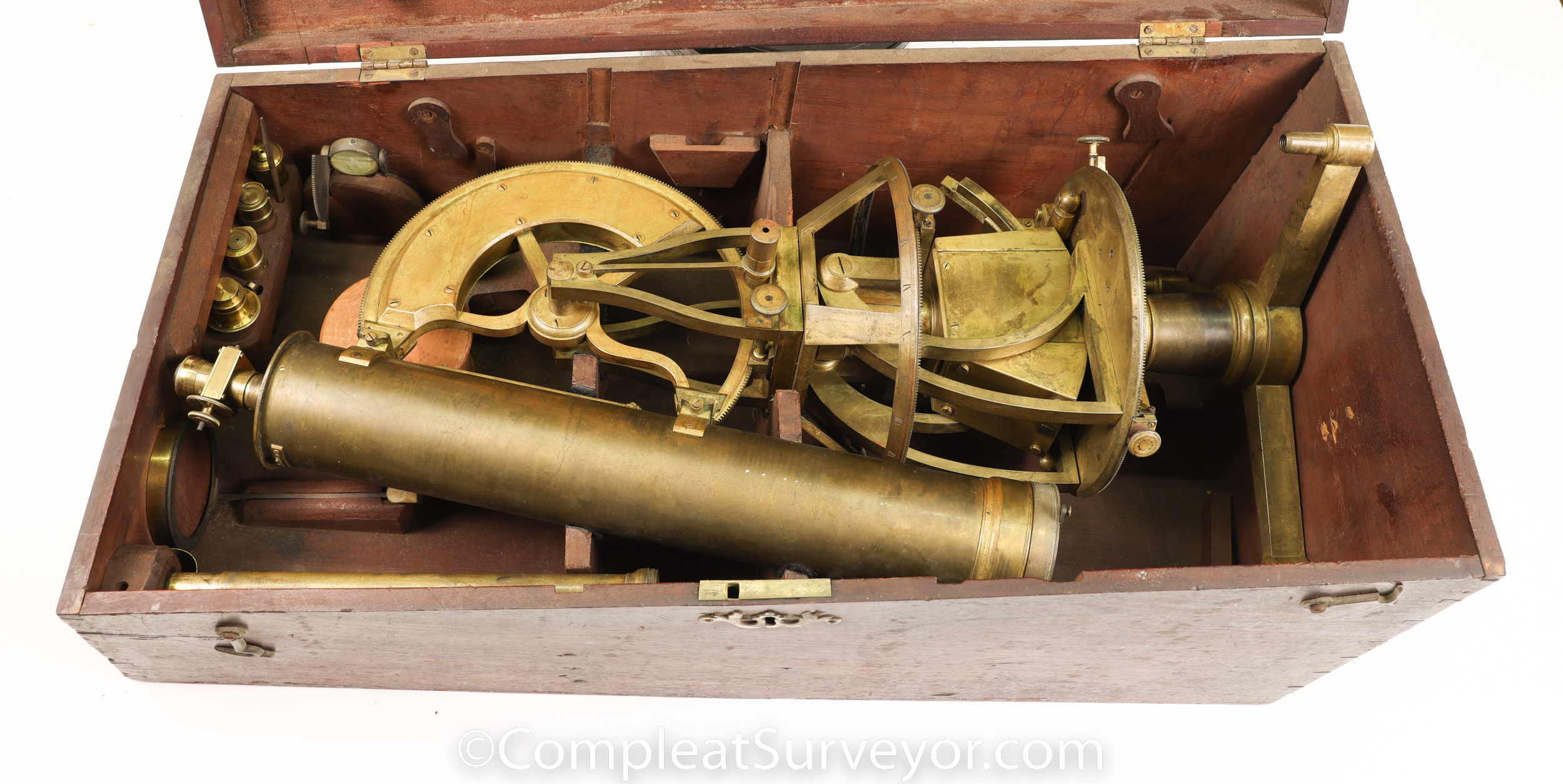
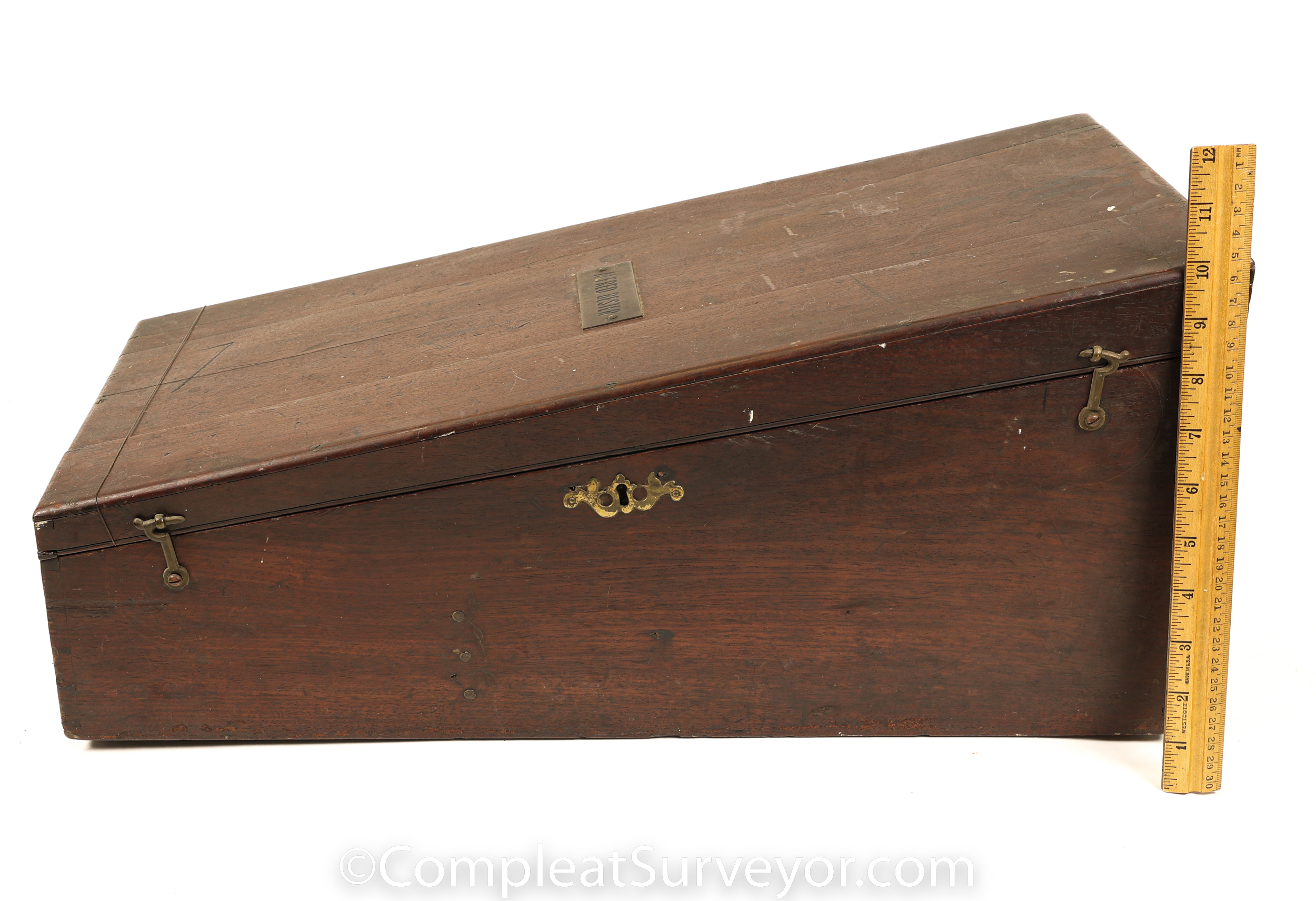
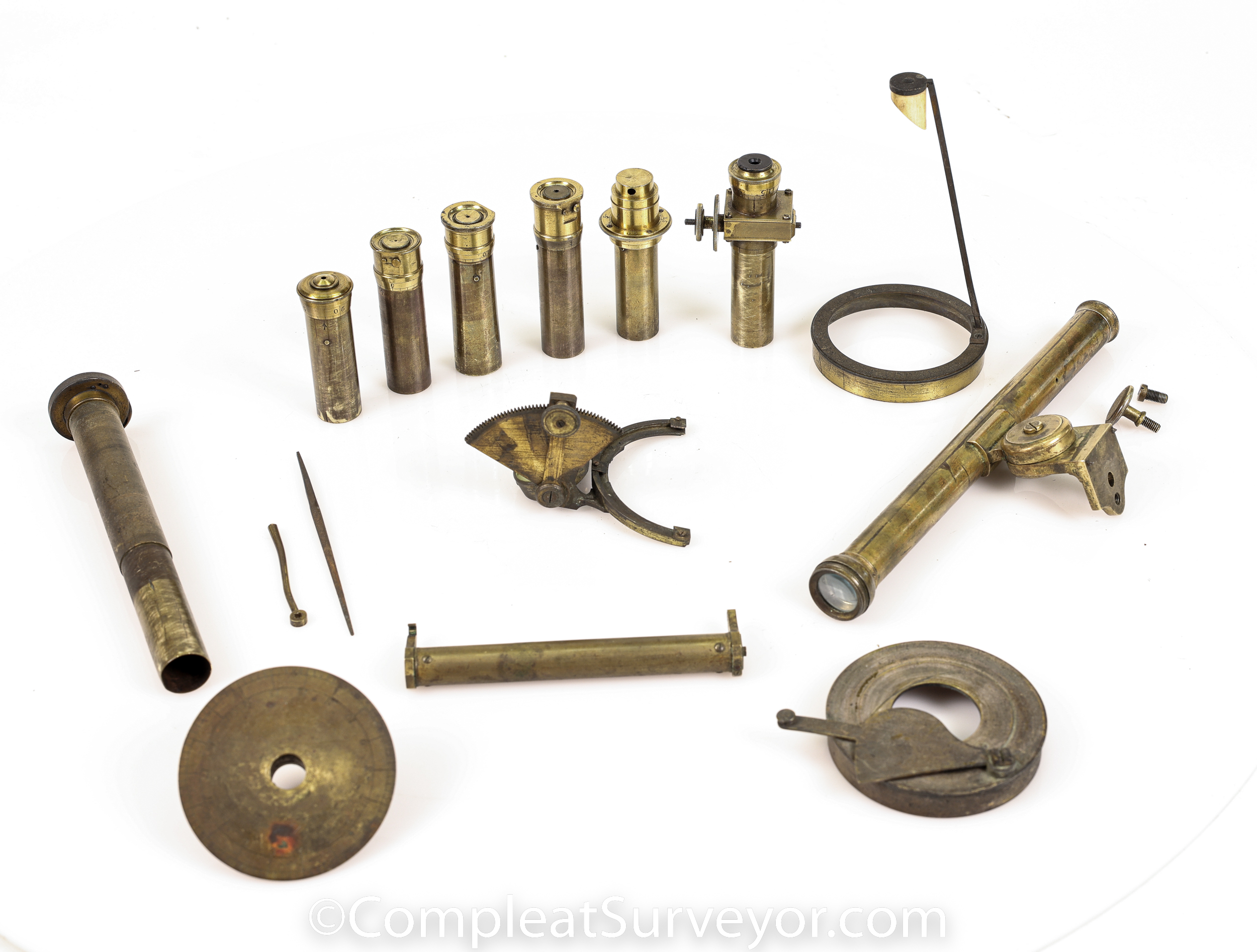
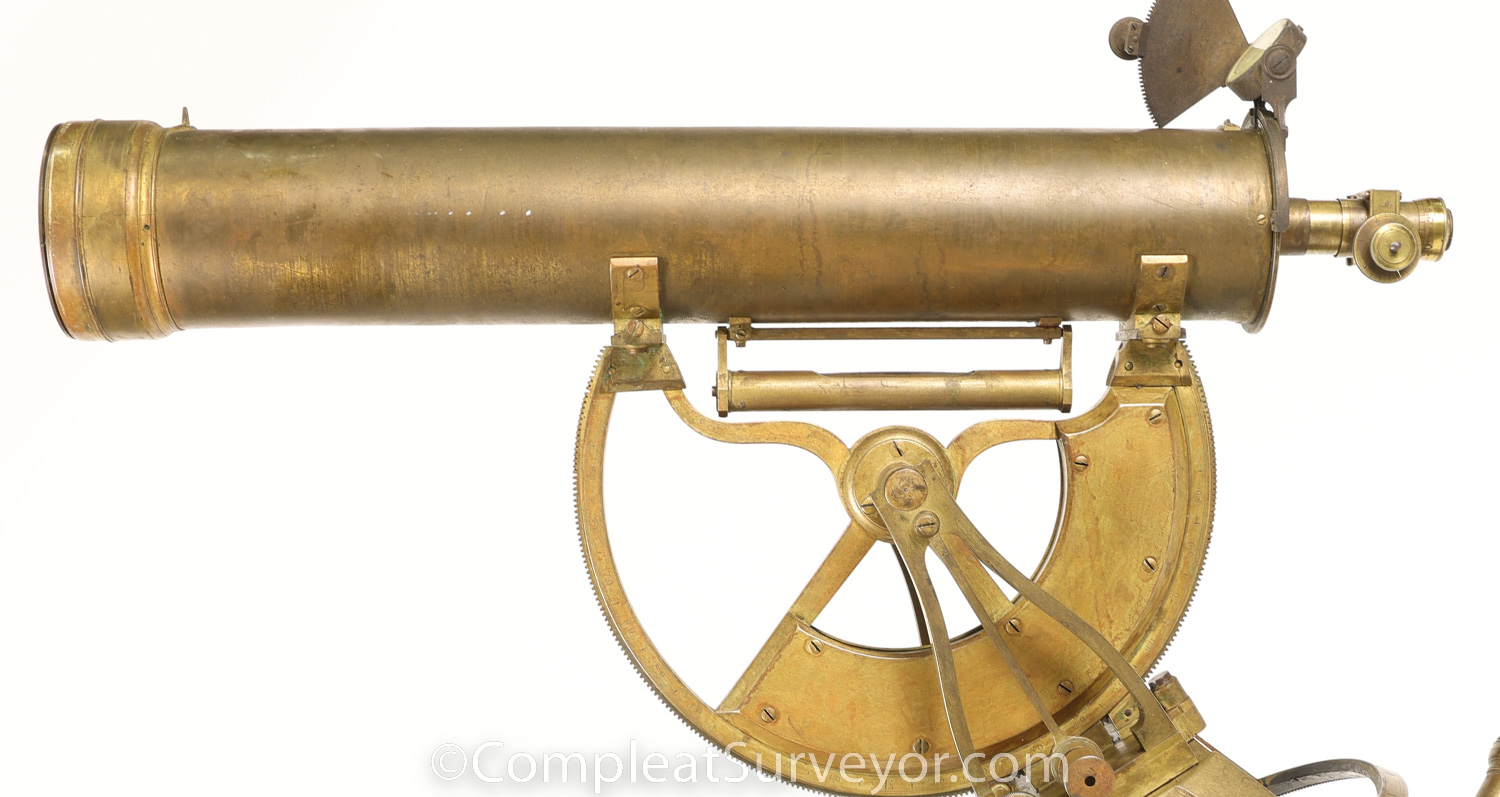


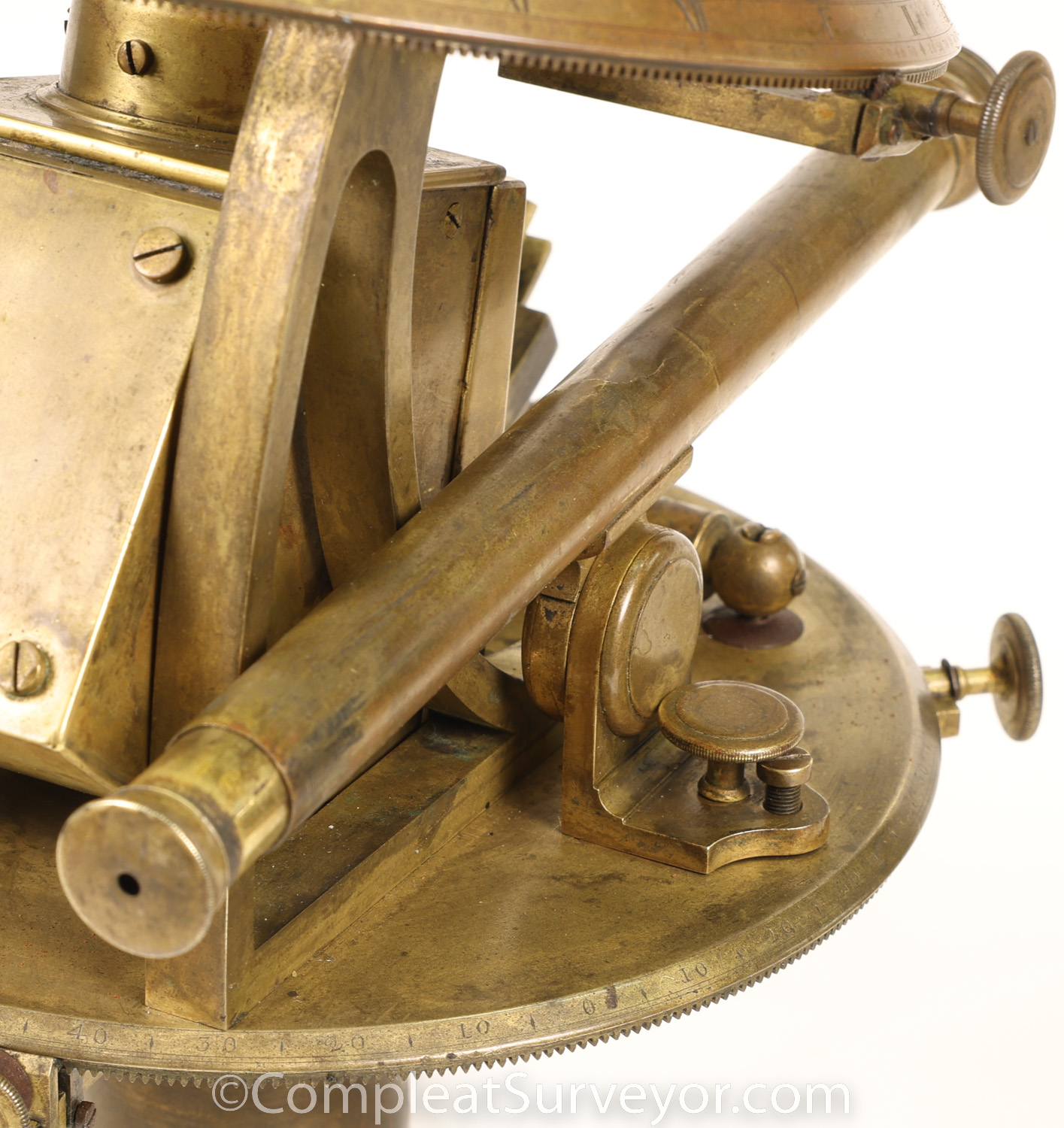
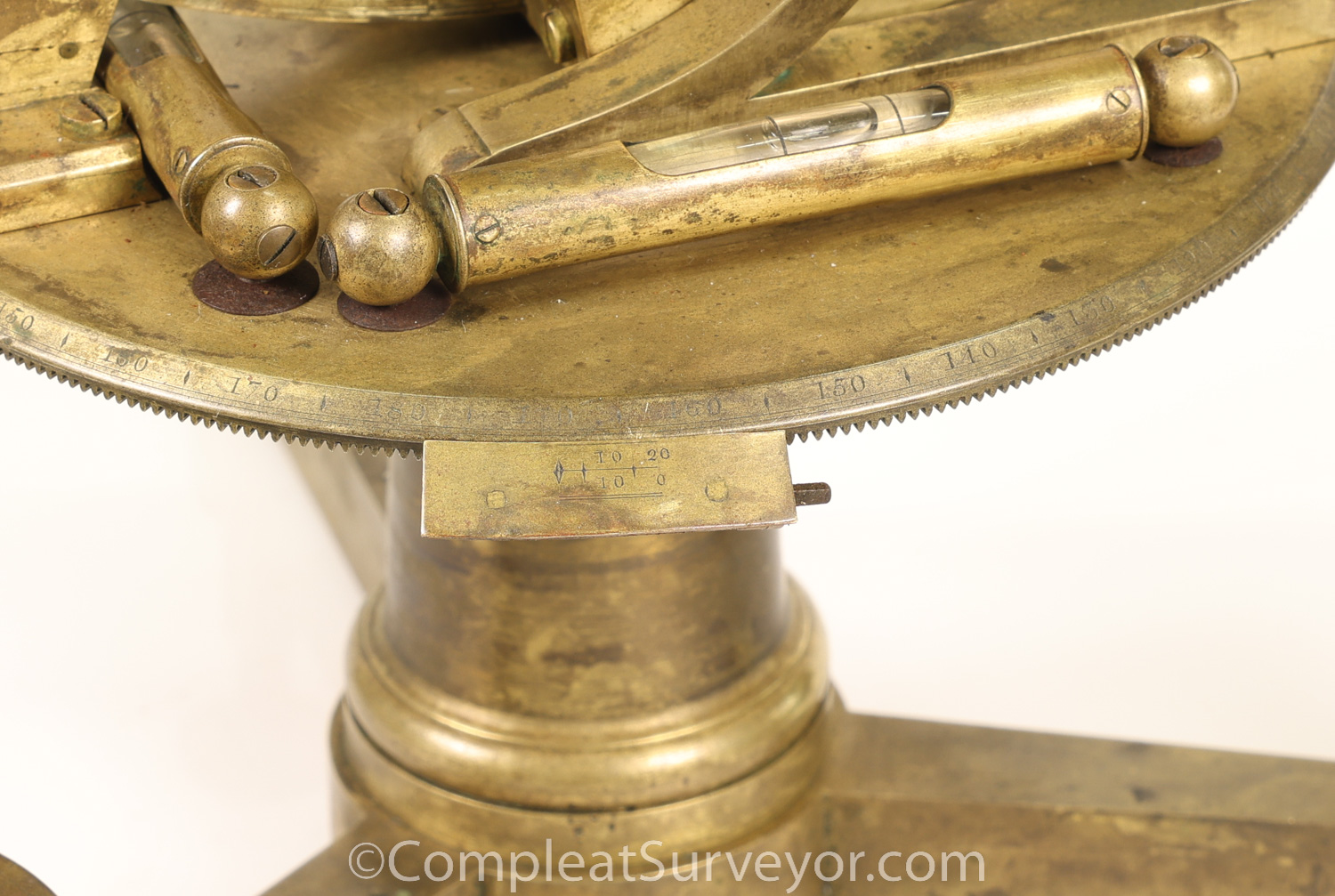
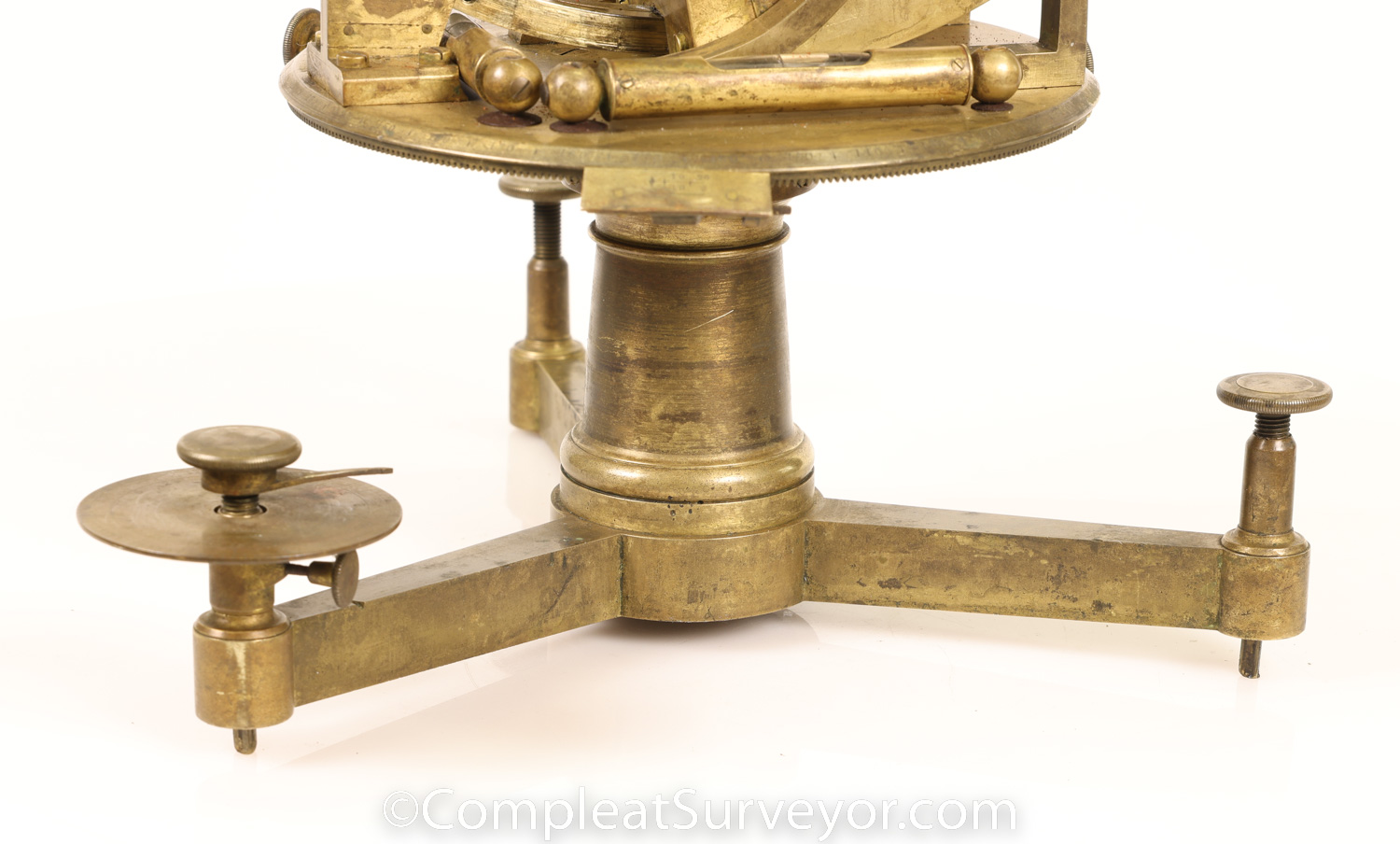
© 2020 Russ Uzes/Contact Me
